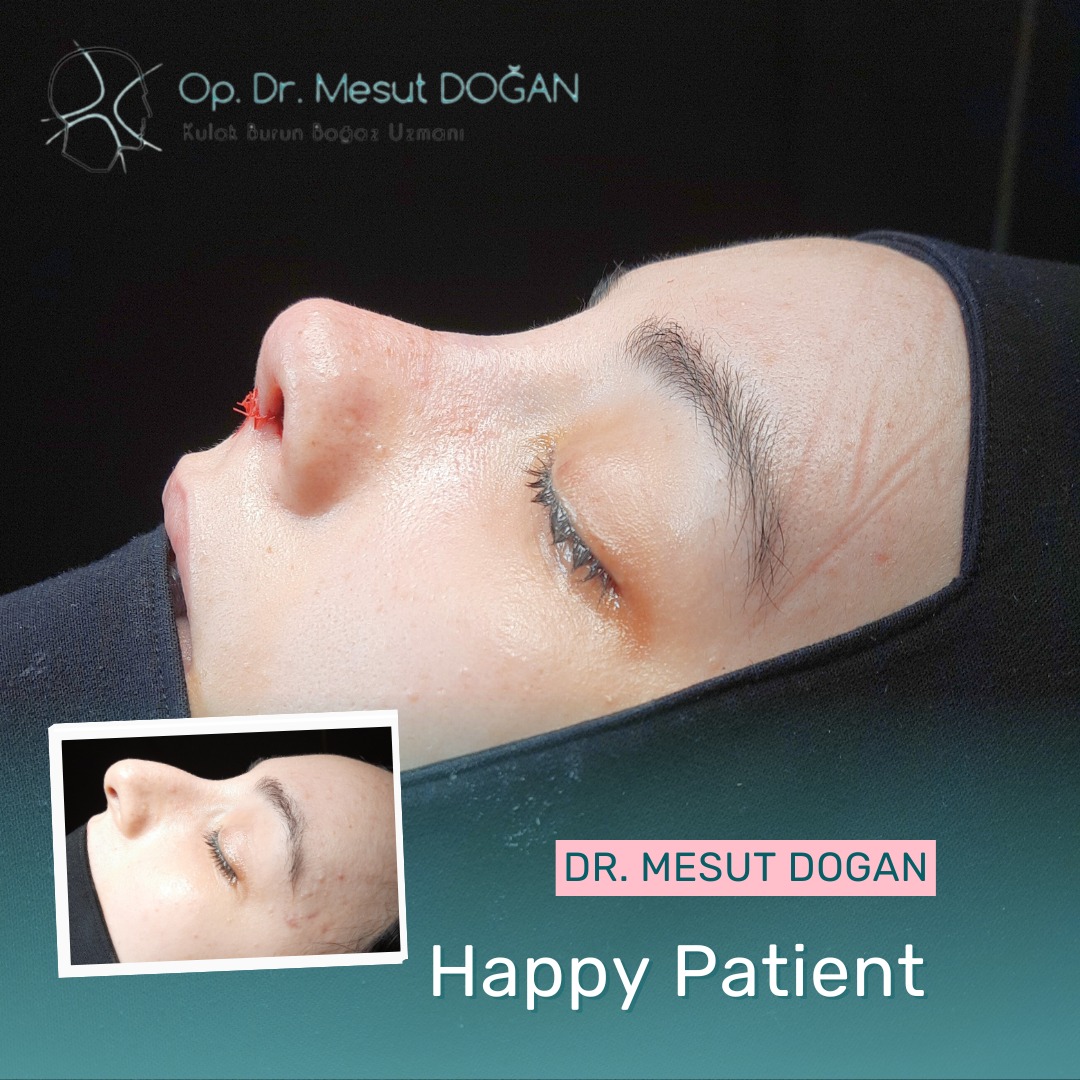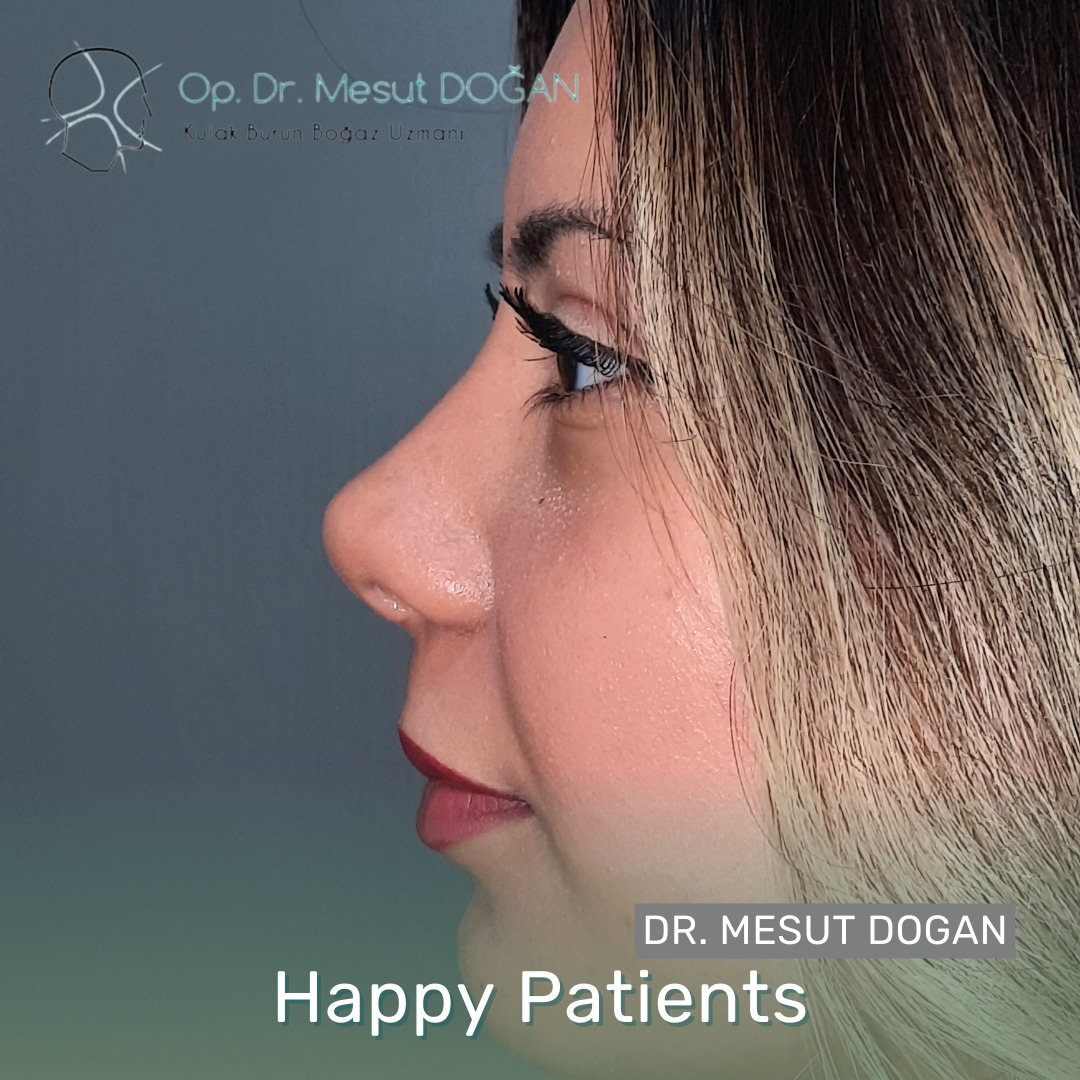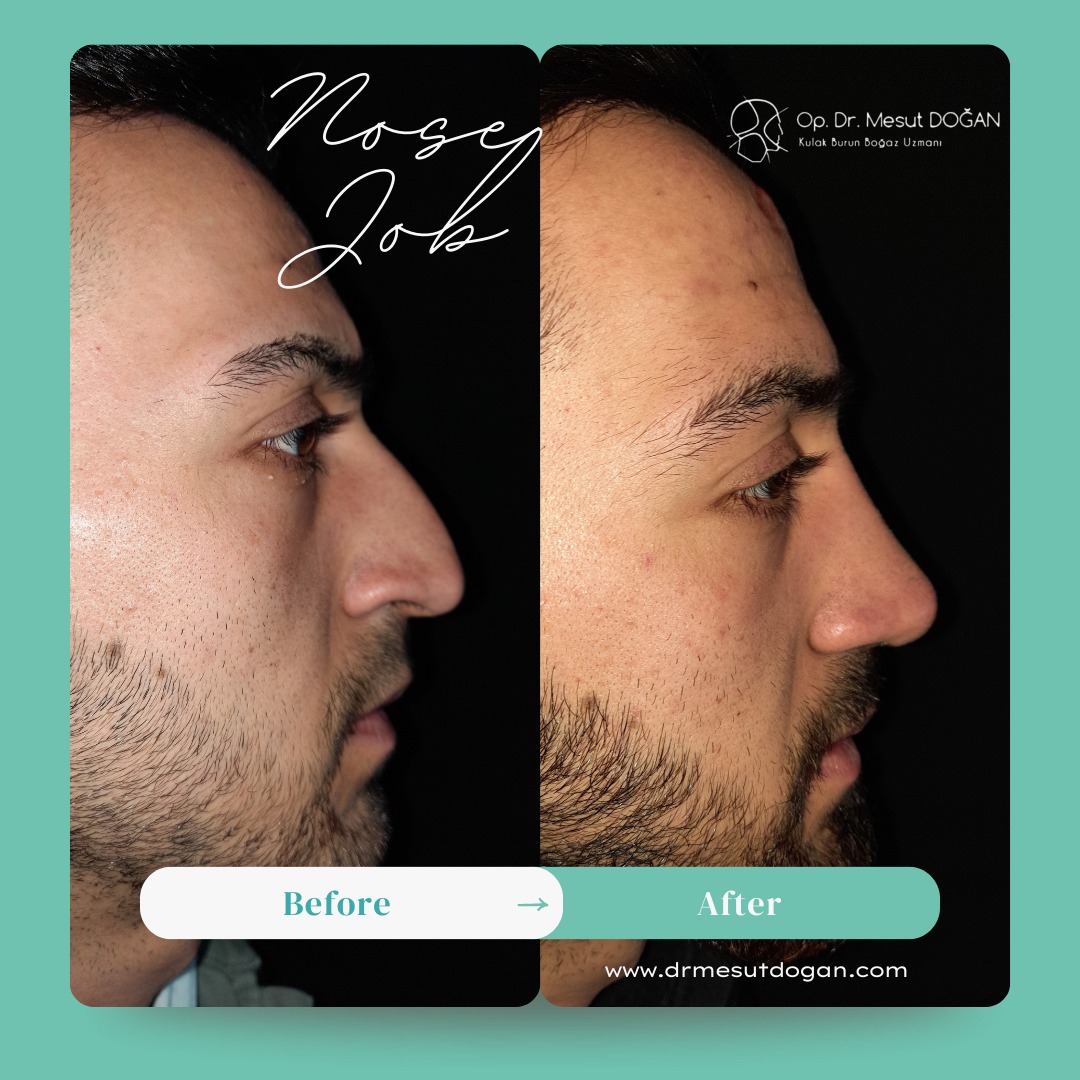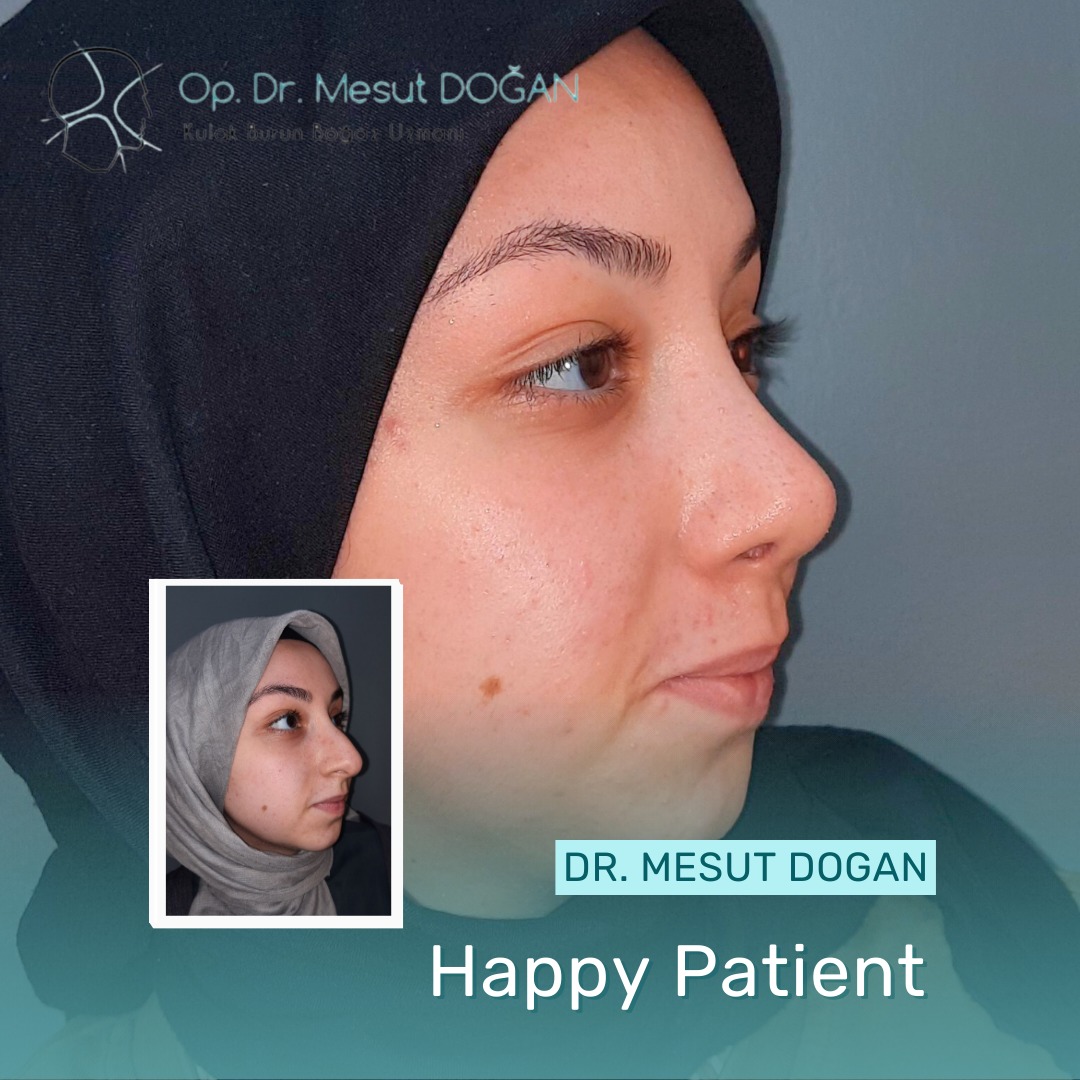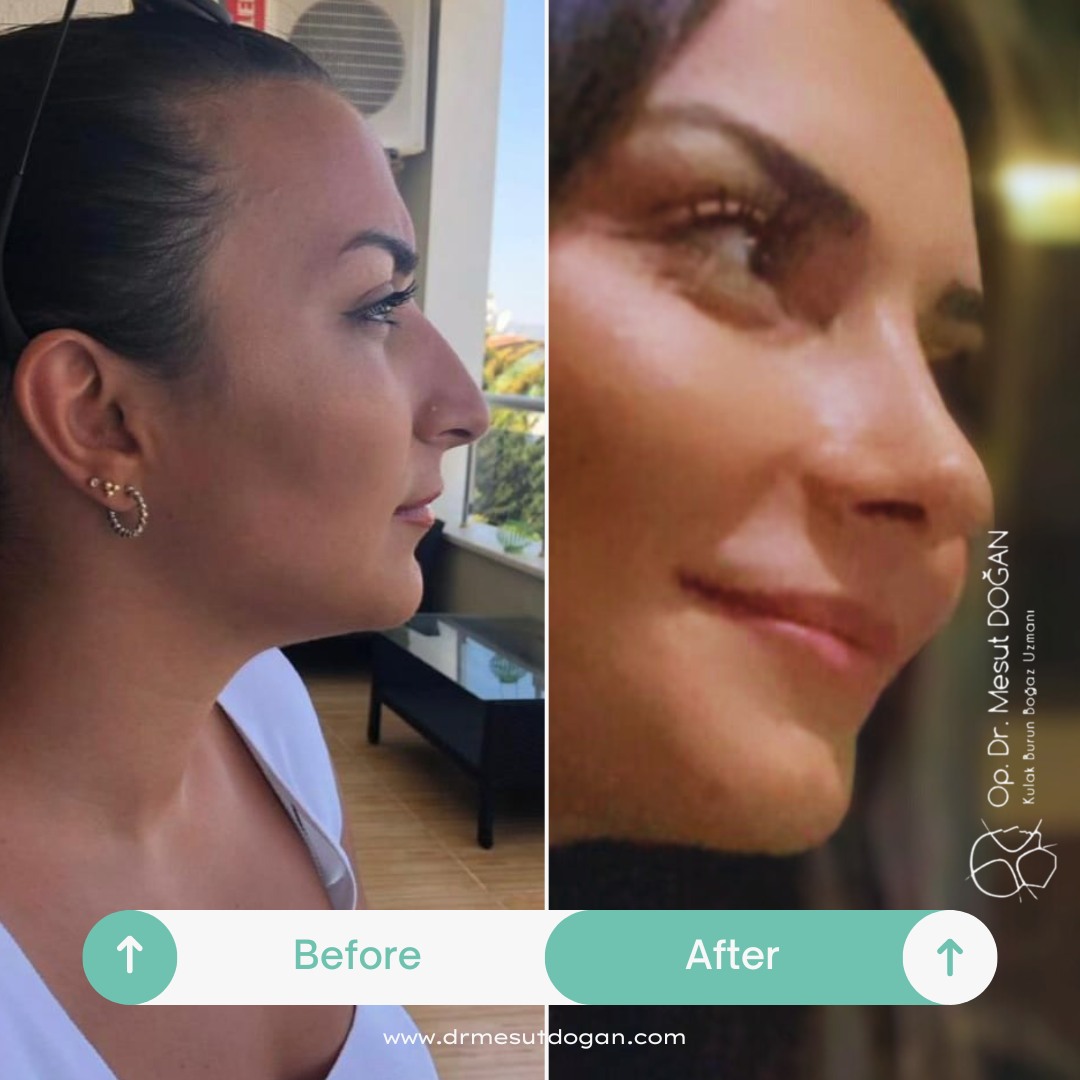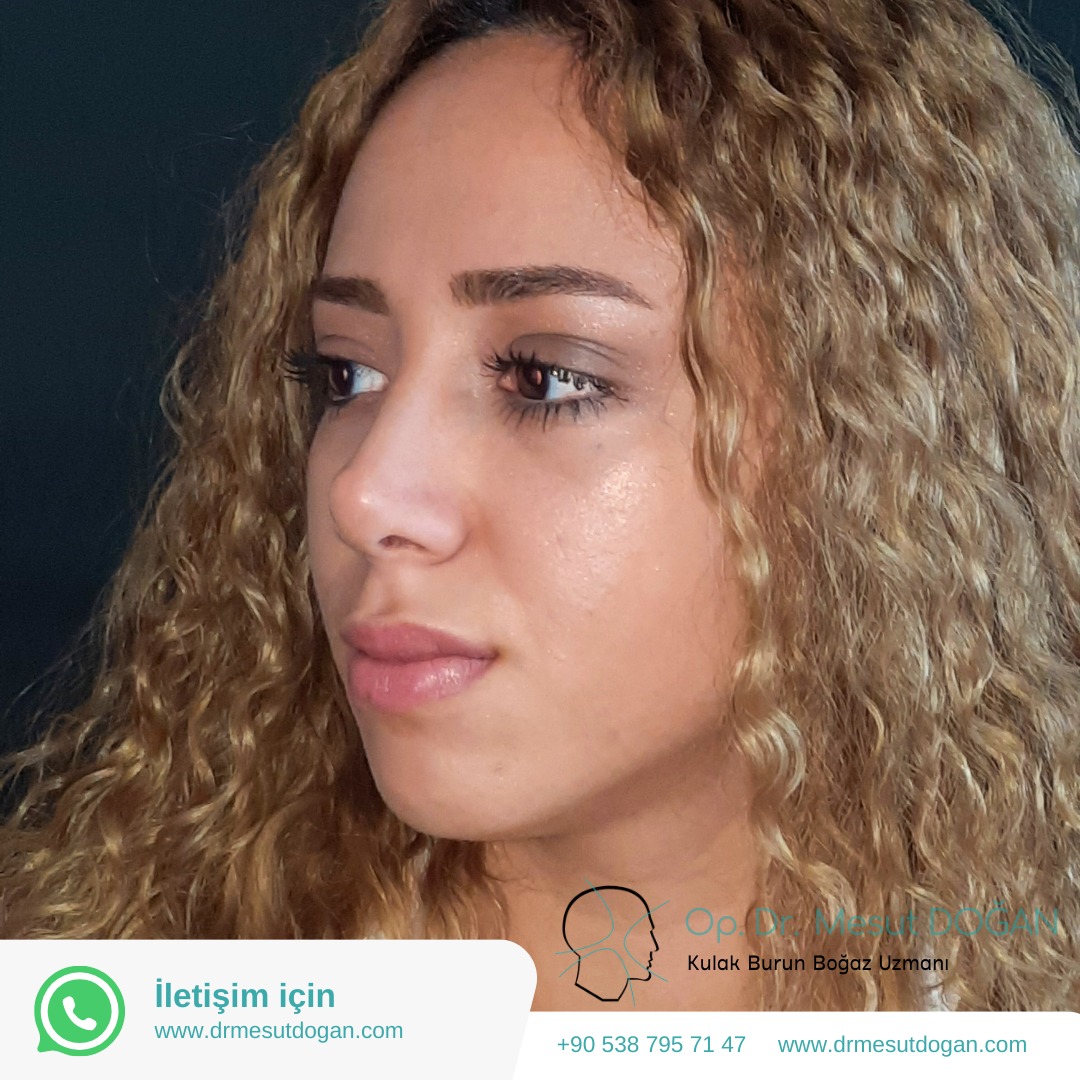After Nose Surgery
First of all, it’s important to note that the recovery process is not as painful as many people assume. The symptoms experienced in the first 6 hours post-surgery are usually related to anesthesia and may include nausea, headache, sore throat, or shivering upon waking. These can typically be managed with medication or time.
In the early phase after rhinoplasty, patients may experience mild burning pain in the nose, sensitivity or pain in the teeth, or forehead pressure. There may also be blood-tinged nasal discharge, which is perfectly normal and gradually subsides.
Bruising and swelling around the eyes can occur early on but are significantly minimized with the use of Piezo surgery, a modern technique. Swelling usually resolves within 2–3 days, and bruising fades in 7–10 days. In the past, ice packs were commonly recommended, but with the reduced trauma of Piezo surgery, they are often no longer necessary—though patients may still use them if they wish. Similarly, anti-bruising creams can be used without issue.
Postoperative Complaints (Later Stage)
One of the most common complaints after discharge is nasal congestion, often caused by dried secretions blocking the channels in the silicone splints. To prevent this, patients are given nasal sprays postoperatively.
At the 1-week follow-up, the silicone splints are removed. Once removed, most patients feel significantly more comfortable. The nasal cast placed on the bridge of the nose is also removed during this appointment, and the tapes are replaced. Tapes are usually removed completely after another week.
Nutrition After Surgery
Patients must avoid all food and drink, including water, for 4–5 hours after surgery due to the effects of anesthesia. This is standard practice for any surgery performed under general anesthesia. The first meal should be light and liquid-based. After that, there are no dietary restrictions.
POST-SURGERY INSTRUCTIONS
- Sleep on your back with your head elevated, ideally supported by two pillows. This helps prevent trauma to the nose and reduces swelling.
- No glasses should be worn for at least 3–4 months. If necessary, glasses may be taped to the forehead to avoid pressure on the nasal bridge.
- Avoid any trauma or impact to the nose.
- The skin may become irritated from the tapes and being covered for about two weeks; gentle skincare routines can help.
- Avoid getting water on the face for about 2 weeks. The body can be washed, and hair can be washed by tilting the head backward, like at a hair salon.
- After the tapes are removed, washing the face and wearing makeup is allowed.
- Swimming in the sea or using a sauna is permitted two weeks after surgery, but pools are discouraged due to the infection risk and chlorine exposure.
- Light exercise (e.g., walking or stretching) can begin after 2 weeks, provided it’s not intense.
- After the splints are removed, saline sprays are recommended to cleanse the nose.
- Nasal sprays are prescribed to relieve congestion.
- A 1-week course of antibiotics is typically given.
- Antibiotic ointments may be prescribed for the suture sites.
Healing Timeline
It takes about 6 months to 1 year for the nose to fully settle and reach its final shape. This extended healing period is due to the limited lymphatic drainage and reduced blood supply, particularly at the nasal tip, which heals the slowest.
To reduce swelling, gentle massage over the nasal bridge can be done after the tapes are removed—but caution is advised, as many patients tend to press too hard. For this reason, massage is not routinely recommended.
Patient Reviews
I chose Dr. Mesut Doğan for my rhinoplasty operation, and I’m incredibly satisfied with the result. I now have a nose that looks natural and suits my face perfectly. He was attentive throughout the entire process, both before and after the surgery. I’m so glad I chose him!

I had been unhappy with my nose for years but kept postponing surgery out of fear. Thanks to Dr. Mesut Doğan, I was able to overcome all my fears. A natural appearance and being able to breathe comfortably were very important to me — and he delivered both. I’m truly grateful to him and his team.

I did extensive research on rhinoplasty and decided that Dr. Mesut Doğan was the right choice. From the very first consultation, he and his team made me feel confident and reassured. After the surgery, I achieved an excellent result both aesthetically and functionally. I’m so glad I met you, doctor!

I consulted Dr. Mesut Doğan for rhinoplasty and the result exceeded all my expectations. My nose looks so natural that no one can even tell I had surgery. He was by my side with his warm attitude and professionalism at every stage of the process. Endless thanks!

I had been unhappy with both the appearance of my nose and breathing problems for a long time. After meeting Dr. Mesut Doğan, I knew I had made the right decision. My surgery went very smoothly, and I’m extremely happy with the way I look now. I wholeheartedly recommend him to everyone.


